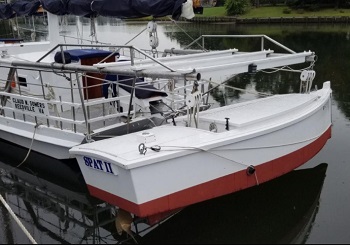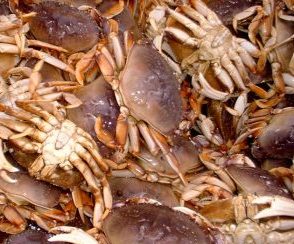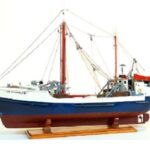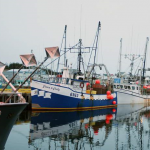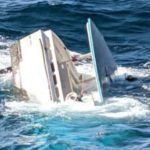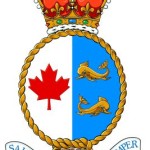Surrounded by wood shavings and the sound of sanding in the Reedville Fishermen’s Museum boat shop in Northumberland County, Egbert Dees and Pete Kauneckas were taking measurements of the angle and length of the driveshaft descending from the boat’s motor. The Spat II is what Chesapeake Bay waterman call a pushboat or yawl boat. It’s basically a floating motor that can be used to power the wind-powered skipjacks that have dredged oysters on the estuary for generations. The boat shop volunteers are replicating a boat called Spat I, which for more than 20 years has powered or been hauled up on davits at the rear of the skipjack called the Claude W. Somers. >click to read< 09:41
Tag Archives: Reedville Fishermen’s Museum
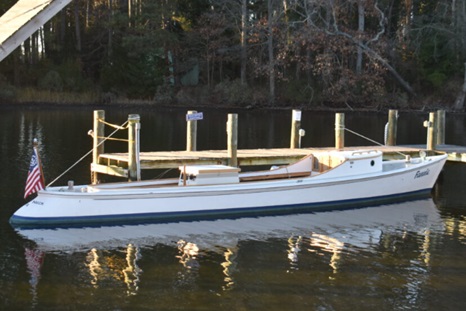
Christmas Comes Early: Reedville Fisherman’s Museum Gifted Historic Draketail
Reedville Fishermen’s Museum (RFM) has a special new resident at its dock. The museum was recently gifted a 99-year-old Chesapeake deadrise draketail boat with a unique dolphin nose stern by Bill and Beverly Pickens of Ware Neck, Va. Guests will have a chance to take tours on her beginning next year. Fannie is 36’ x 6’ x 2’6” and was built in 1924 by Charles Spencer. He built two boats of this style in his yard at Brick Inn on Main Street in St. Michaels, Md. One of the boats was named Fannie, after his daughter. The draketail stern, sometimes called a Hooper’s Island draketail because so many of this design was built in that area, was modeled after early motor-powered racing launches and torpedo boats. photos, more, >>click to read<< 06:20
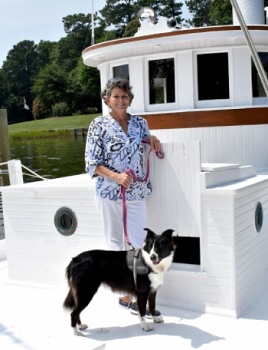
Daughter of Reedville Fisherman’s Museum Founder Named President
Passion, love of a cause and, and energy – Becky Haynie of Reedville, Va. checks all three boxes for the Reedville Fishermen’s Museum where she was recently elected president of the board of directors. Becky’s passion and love of the job comes from her late father Wendell Haynie who passed away Dec. 20, 2020. Wendall, his brother Braxton and Alice Butler spearheaded the formation of the Greater Reedville Association in 1988, which led to the creation of the museum.,, “My father grew concerned that so many artifacts were disappearing off the boats and that there would not be any left for posterity,” she said. “He wanted to create a home to secure and display them. I want to make sure that home is secure too. >click to read< 09:05






